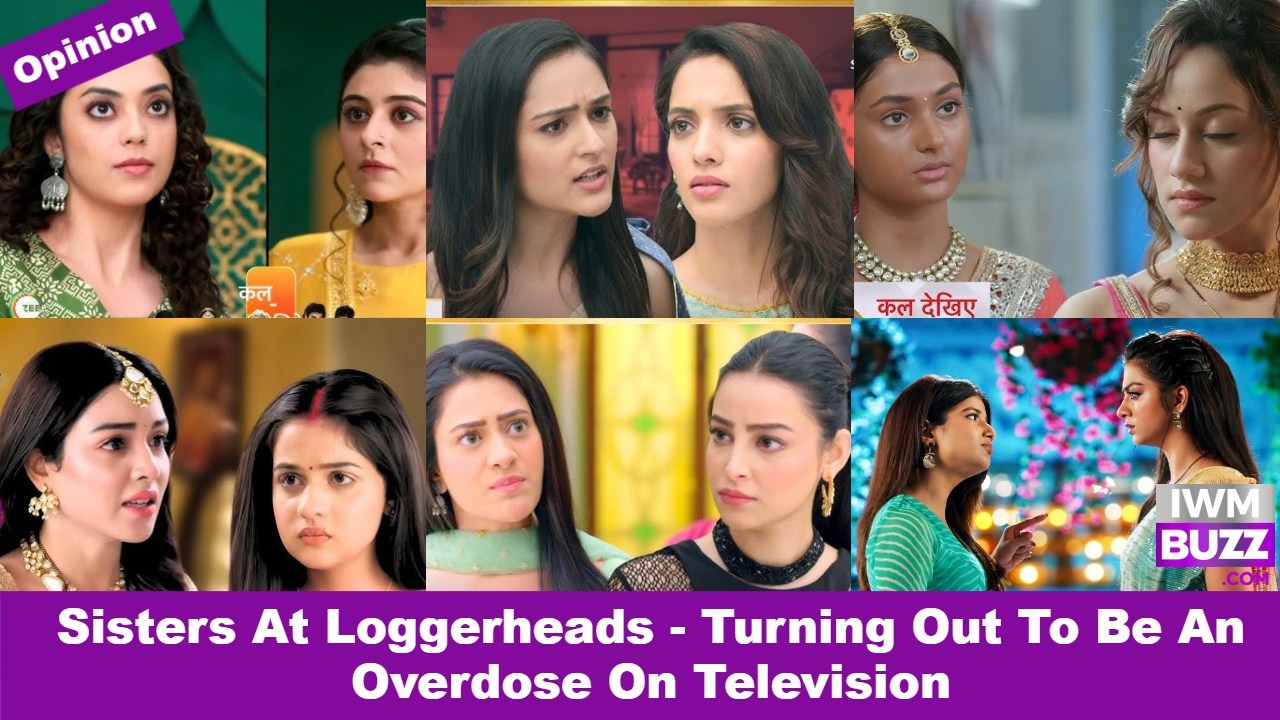As we approach the conclusion of 2024, Hindi television appears to be entering a promising phase. Numerous innovative concepts are currently airing across General Entertainment Channels (GECs), showcasing the potential to captivate and engage a wide range of television audiences. However, amid this creative resurgence, there remains a pressing issue – the persistent recurrence of certain plotlines that dominate the landscape of contemporary programming. One particularly prevalent theme is the portrayal of rivalry between sisters within families. It seems increasingly common to find stories centred around sisters from the same family whose relationships devolve into bitter enmity. In some instances, the animosity between these siblings reaches such intense levels that it borders on outright hatred. While one might expect this dramatic conflict to be an exception, its widespread prevalence across multiple shows on various GECs suggests an overabundance that risks overwhelming viewers. The audience is left to grapple with this overused narrative arc, prompting questions about creativity and originality in storytelling within the realm of Hindi television.
In an age where audiences eagerly seek relatable content and fresh, innovative ideas for their screen time, it’s disheartening to observe the occasional deluge of mediocre programming that floods the entertainment landscape. Viewers find themselves bombarded by a seemingly endless cycle of worn-out storylines and repetitive themes, leaving them scratching their heads in bewilderment. The sense of déjà vu is palpable; devoted fans can often foresee upcoming plot twists with startling accuracy, as the narratives feel all too familiar—like echoes of shows they’ve watched repeatedly. This lack of originality not only dulls the viewing experience but also diminishes the excitement and suspense that once drew people to their screens.
The concept of sister rivalry is not a novel one in television; it has been explored in various shows over the years. Notable examples include Udaariyaan and Sasural Simar Ka, both of which enjoyed considerable success in the past. However, in our current landscape, where viewers tend to quickly change channels at the first sign of dissatisfaction, the responsibility now lies heavily on the shoulders of writers and creative teams. They are tasked with the challenge of crafting fresh and compelling narratives that can capture and hold the audience’s attention in a competitive and ever-evolving media environment.
What do we find ourselves observing in today’s television landscape? It appears we are caught in a loop of familiar narratives, with sisters embroiled in fierce ideological clashes, driven by personal motives and, most notably, a common love interest. Currently, seven to eight shows are airing on various General Entertainment Channels (GECs) that prominently feature this clichéd theme of sibling rivalry over shared affection. A recent example is the now-concluded series Krishna Mohini on Colors. Initially, the show held promise with a unique premise, but as it progressed, it deteriorated into the all-too-familiar drama of sisterly conflict, seemingly as a desperate attempt to boost its dwindling ratings. It’s disheartening to see a storyline that began with potential devolve into the same repetitive struggle for love and recognition.
Rabb Se Hai Dua, airing on Zee TV, has been exploring the intricate dynamics of sisterly rivalry for a considerable duration. At the heart of this gripping narrative is the tumultuous relationship between sisters Ibaadat and Mannat, who find themselves embroiled in a fierce competition for the affection of the charming Subhaan. Their relentless back-and-forth, marked by moments of tension and emotional turmoil, captivates viewers as they navigate the complexities of love and loyalty. But are we seeing something different here?
The new launches on Star Plus, Maati Se Bandhi Dor, Dil Ko Tumse Pyaar Hua, Iss Ishq Ka Rabb Rakha, Do Dooni Pyaar seem to be trapped in a cycle of repetitive themes and narratives between sisters. Each episode unfolds with familiar conflicts and misunderstandings that often stretch the boundaries of logic, leaving viewers scratching their heads in disbelief. This begs the question: what motivated the network to greenlight such similarly themed shows, especially when they all air concurrently? It feels as though the originality that captivates audiences has taken a backseat to a formula that, while perhaps comforting to some, ultimately lacks the diversity and engagement many viewers crave.
If these overkills are not enough, we have the same plot flourishing in a few of the top-rated shows Yeh Rishta Kya Kehlata Hai and Jhanak. The pattern doesn’t stop there; even Colors’ Mera Balam Thanedaar adds to this growing list, presenting a narrative that echoes the same overused theme. The sheer volume of these shows showcasing similar plots raises questions about originality and creativity in contemporary television.
We assure you, that our focus is solely on the television shows currently airing. However, it’s worth reflecting on the myriad of similar concepts that have graced our screens in the past. Shouldn’t the viewing audience be entitled to a higher standard of content than what has often been presented on the small screen? It’s essential to consider whether the television landscape can be enriched with more innovative and engaging programming that truly captivates and resonates with viewers.
Also, this is only one repetitive concept about sisters being at loggerheads, that we have addressed here. Innumerable such similar broad stories have been on display.
Undoubtedly, the world is brimming with exceptionally talented writers and imaginative creatives who possess the remarkable ability to conceive captivating and intricate storylines. Given this wealth of talent, why should we simply accept the narratives that have already been presented? Is it possible for us to spark a transformation that will pave the way for a more innovative future in storytelling on television?


